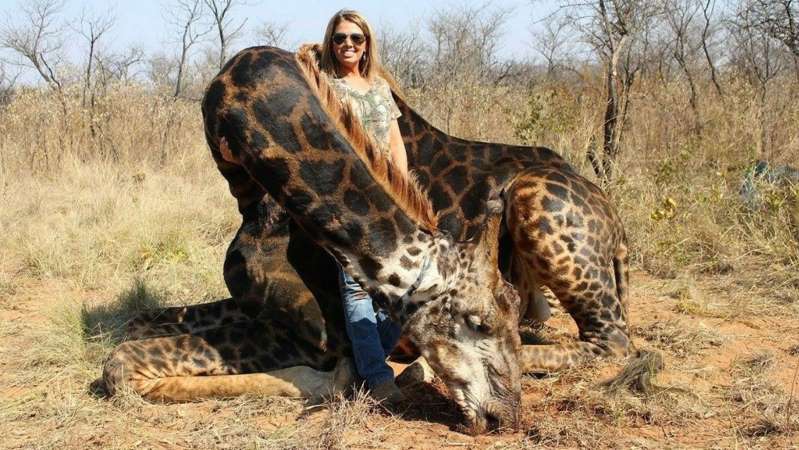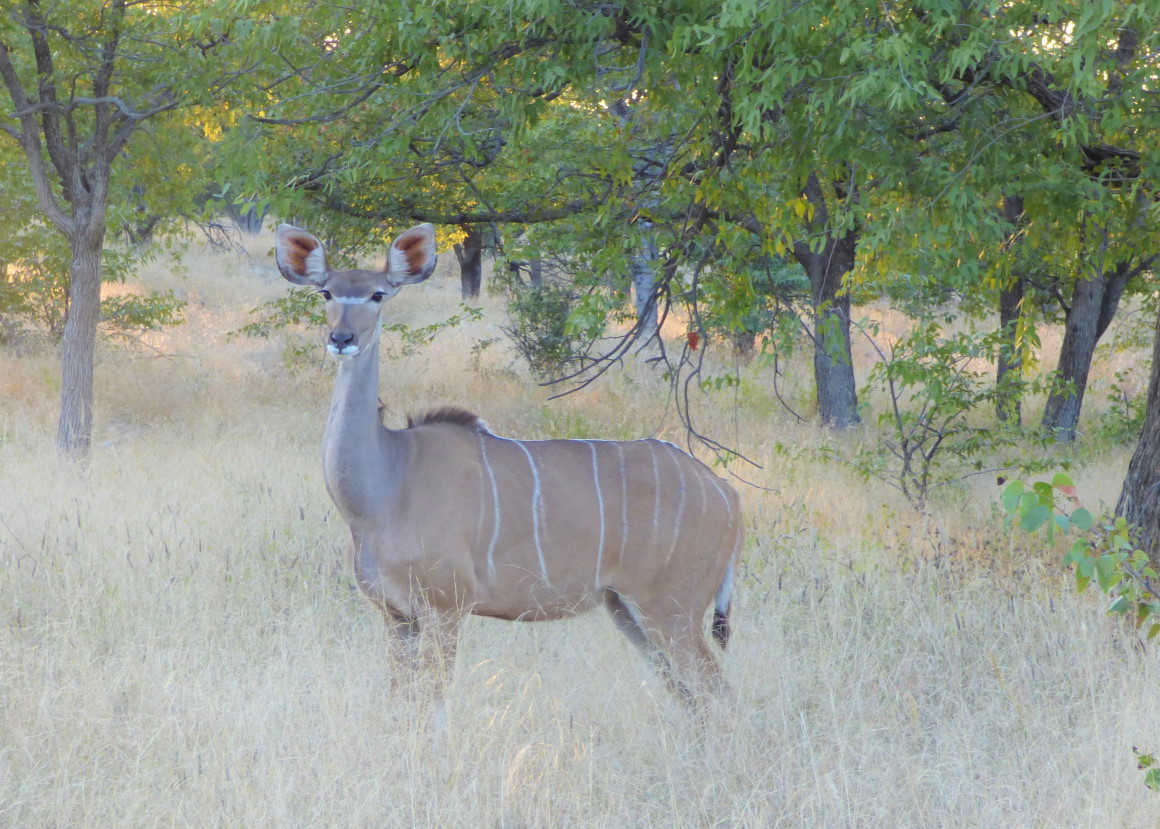Big game trophy hunting has recently hit the headlines yet again with another American huntress causing worldwide outrage by posting photos on social media and causing widespread attention. It could be said that they do it on purpose. And of course that is exactly want they want to do. They want us outraged, and strange though it may seem, they want the publicity so that they can get the notoriety and associated celebrity they crave and social media is the best way of doing so.
The culprit this time is a lady from Kentucky named Tess Thompson Talley who stated:
“prayers for my once in a lifetime dream hunt came true today. Spotted this rare black giraffe bull and stalked him for quite awhile. I knew it was the one. He was over 18 years old, 4,000 lbs and was blessed to be able to get 2,000 lbs of meat from him.

They know what they do is perfectly legal and that they have the backing of many conservationists, wildlife experts and scientists. Many are coming around to the idea that perhaps it does benefit some animals in the long-term to be hunted for money which can be used to pay for their protection and habitat.
“Lions need trophy hunting just as much as trophy hunting needs lions”
Dr Craig Packer, an eminent American professor with a passion for conserving lions is one of them and has stated: ‘Lions need trophy hunting just as much as trophy hunting needs lions’. He believes their long-term survival depends on big money coming in to protect them and was also quoted as saying:
“Trophy hunting is not inherently damaging to lion populations provided the hunters take care to let the males mature and wait to harvest them after their cubs are safely reared. The dentist [who shot Cedric] was unlucky and not altogether to blame. Trophy hunters are no angels, but they actually control four times as much lion habitat in Africa than is protected in national parks; and 80% of the world’s lions left in the world are in the hunters’ hands”.
For the countries involved, such as Namibia, South Africa, Tanzania, Zimbabwe and Mozambique it apparently benefits their economy greatly. Advocates are quick to point out that by encouraging ‘hunting farms’ wildlife and natural habitat is also encouraged and not used for livestock, therefore benefiting conservation.
“you can often be sharing the dinner table with hunters who have just shot one of the animals you came on safari to see”.
Hunting farms are on the increase and are shooting galleries full of semi tame animals that are easily tracked and shot. They have the dual purpose of being ‘private reserves’ providing luxury safari accommodation for tourists. Ironically at these places you can often be sharing the dinner table with hunters who have just shot one of the animals you came on safari to see.
The subject is of course extremely divisive and in recent years we have had the story of Cedric the lion in Zimbabwe. He was shot with an arrow, then tracked for hours and finally shot dead by a trophy hunter paying US$35,000 dollars for the privilege. The main reason this story attracted so much attention was that the lion had a name making it more personal to us and was wearing a tracker collar for an Oxford University research team to follow him.
He didn’t realise the lion was so popular and had a name, otherwise he wouldn’t have shot him.
The American dentist, who committed the outrage, apologised for his actions. He said that he didn’t realise the lion was so popular and had a name, otherwise he wouldn’t have shot him. The apology was absurd as basically he was justifying his actions by claiming that shooting some other semi-tame non-celebrity nameless lion would have been acceptable, which bizarrely is probably correct.
What is noticeable is that so many of the hunters are north american, presumably because of the gun culture there and that they are bored with shooting bears, coyotes and pumas in their own part of the world.
There are hundreds if not thousands of iconic wild animals such as lions and bears being bred for the sole purpose of being shot for gain and pleasure, just like game birds. All over Africa big-game hunting is big business, with hunters lining up to pay huge sums to kill ‘trophy’ animals, so that they can display the heads and body parts around the home.
“Everything I have done is legal, so how can you fault someone because of their hobbies?” Sabrina Corgatelli, another ‘celebrated’ hunter.
Big game hunting will never be eradicated in the present climate as there are so many mixed messages coming from all those who should be campaigning against it.
There seems something very wrong in breeding ‘wild’ animals to order, just to be shot to raise funds to supposedly conserve others. If that is the future for the planets’ wildlife, which it seems it is, I just wonder whether it is worth bothering to save animals for future generations.
Updated February 2020
